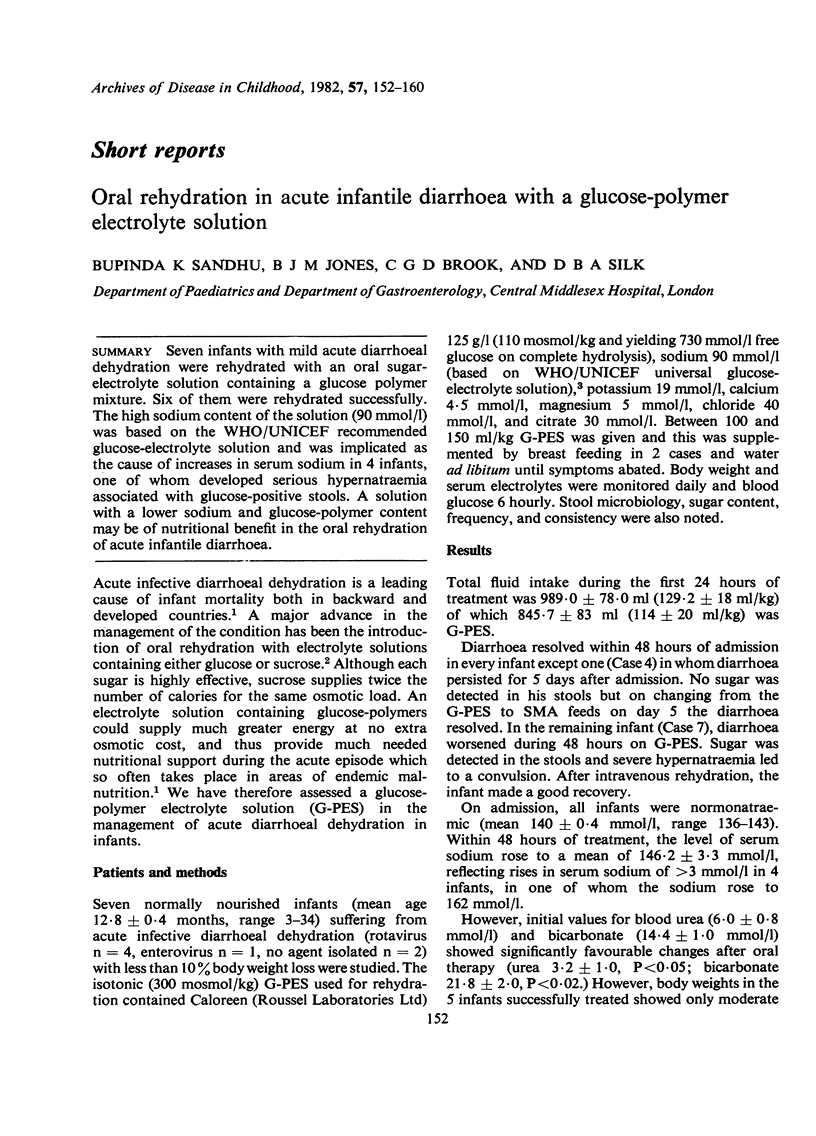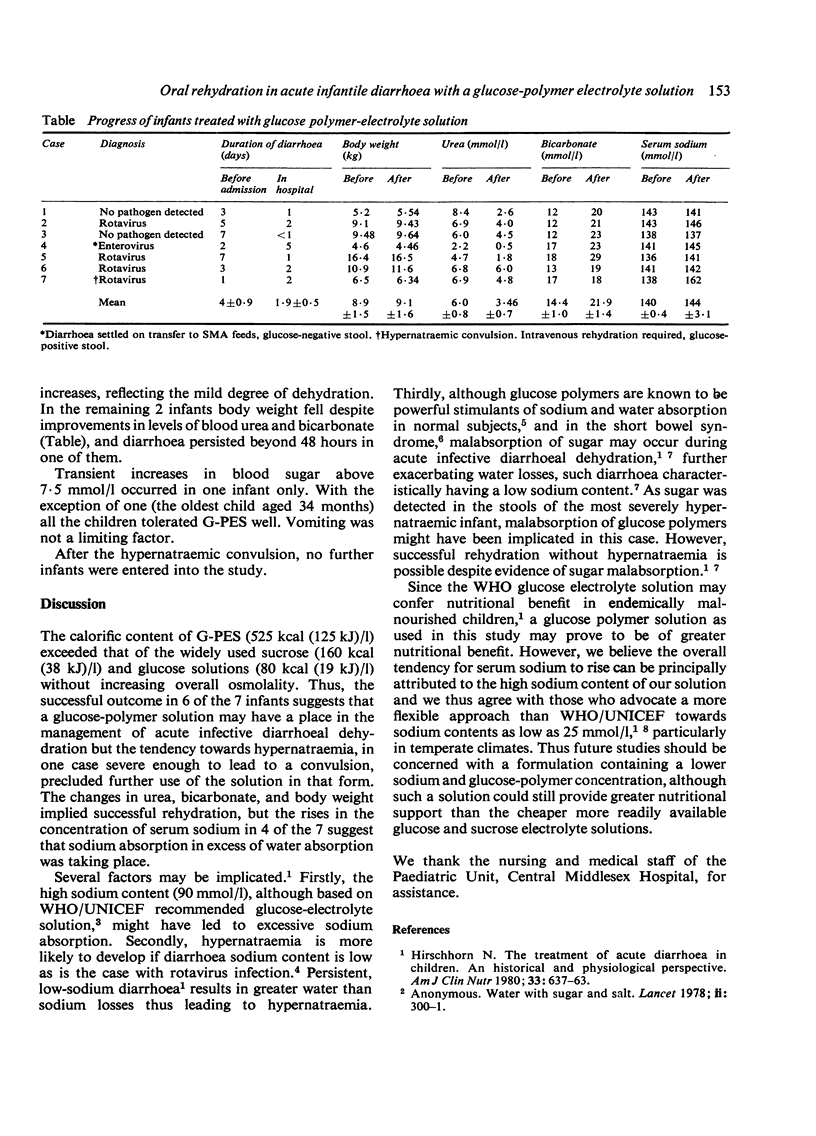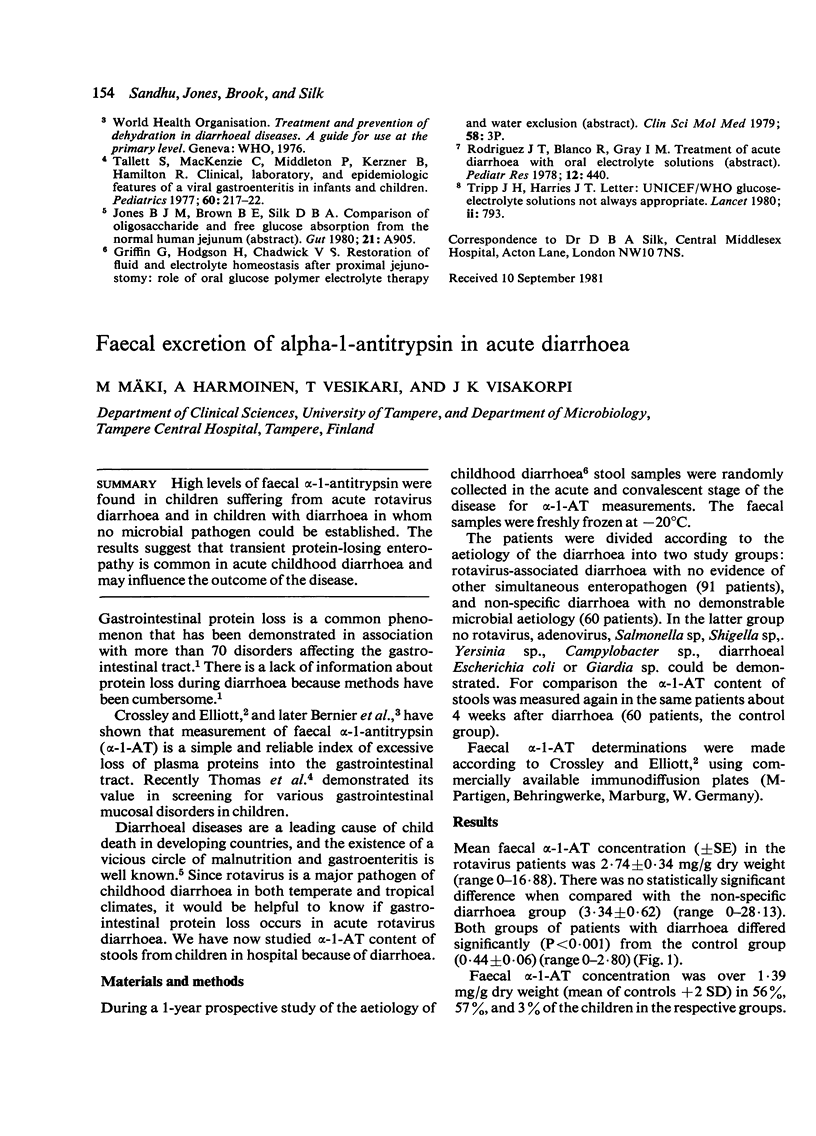Abstract
Seven infants with mild acute diarrhoeal dehydration were rehydrated with an oral sugar-electrolyte solution containing a glucose polymer mixture. Six of them were rehydrated successfully. The high sodium content of the solution (90 mmol/l) was based on the WHO/UNICEF recommended glucose-electrolyte solution and was implicated as the cause of increases in serum sodium in 4 infants, one of whom developed serious hypernatraemia associated with glucose-positive stools. A solution with a lower sodium and glucose-polymer content may be of nutritional benefit in the oral rehydration of acute infantile diarrhoea.
Full text
PDF


Selected References
These references are in PubMed. This may not be the complete list of references from this article.
- Hirschhorn N. The treatment of acute diarrhea in children. An historical and physiological perspective. Am J Clin Nutr. 1980 Mar;33(3):637–663. doi: 10.1093/ajcn/33.3.637. [DOI] [PubMed] [Google Scholar]
- Tallett S., MacKenzie C., Middleton P., Kerzner B., Hamilton R. Clinical, laboratory, and epidemiologic features of a viral gastroenteritis in infants and children. Pediatrics. 1977 Aug;60(2):217–222. [PubMed] [Google Scholar]
- Tripp J. H., Harries J. T. UNICEF/W.H.O. glucose electrolyte solution not always appropriate. Lancet. 1980 Oct 11;2(8198):793–793. doi: 10.1016/s0140-6736(80)90397-9. [DOI] [PubMed] [Google Scholar]


